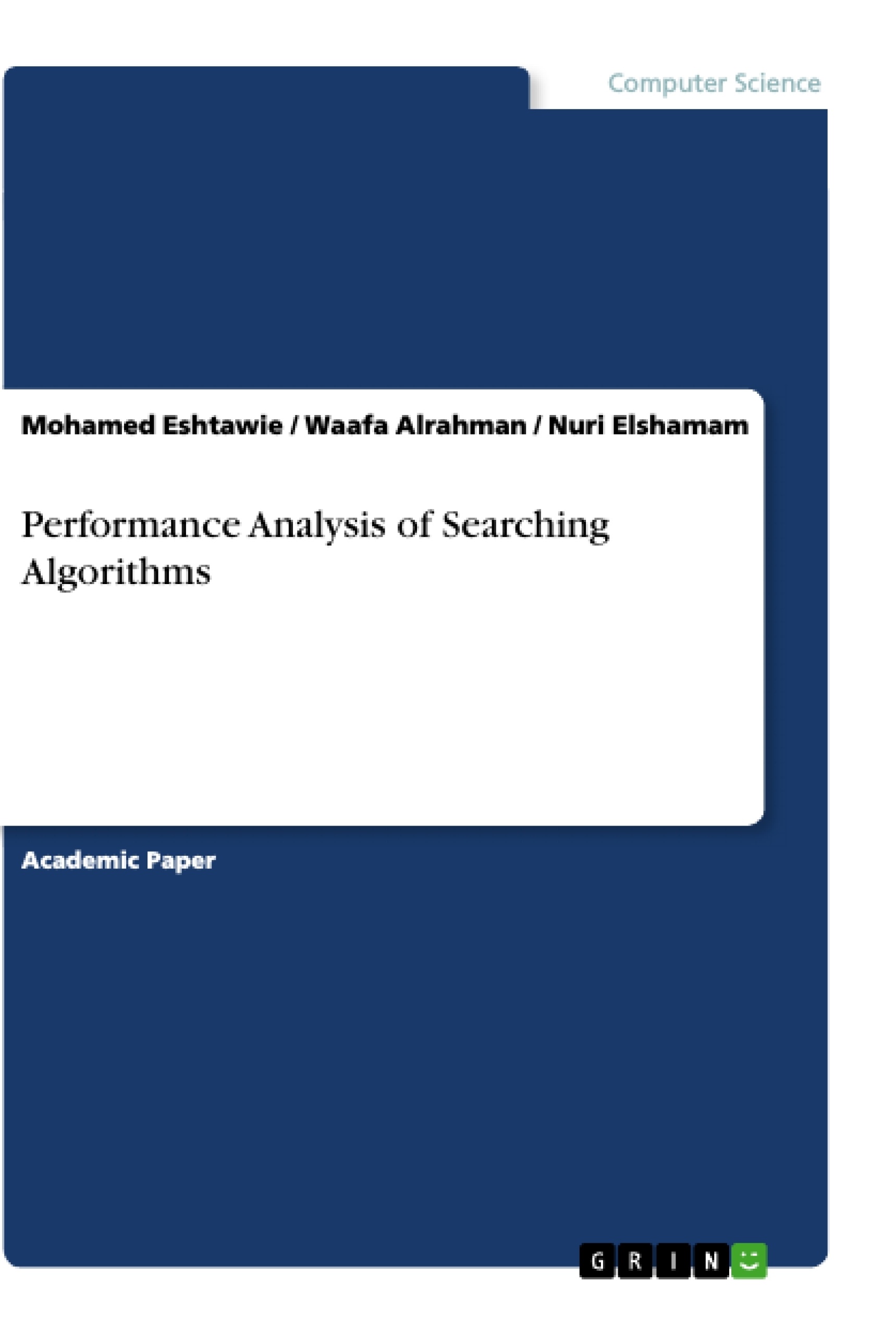Problem-solving is an essential topic in Artificial Intelligence study and application. It is concerned with solving mathematical problems and clues such as puzzles. This study is primarily concerned with the ability of some searching algorithms such as Restricted Boltzmann Machines, Message Passing, Breadth First Search and Depth First Search to Solve Sudoku puzzle problems in the area of AI. For each of these methods, a code in Java language will be written and executed so that performance analysis can take place. A comparison analysis between the selected algorithms will be done. The analysis will cover some parameters such as time, space, optimality, completeness.
Table of Contents
- I. INTRODUCTION
- II. SEARCHING ALGORITHMS
- 2.1. Restricted Boltzmann Machine algorithm (RBM)
- 2.2. Message Passing algorithm (MP)
- 2.3. Breadth First Search algorithm (BFS)
Objectives and Key Themes
This paper aims to analyze the performance of four different searching algorithms—Restricted Boltzmann Machines, Message Passing, Breadth First Search, and Depth First Search—in solving Sudoku puzzles, a classic problem in Artificial Intelligence. The analysis will compare these algorithms based on parameters such as time complexity, space complexity, optimality, and completeness.
- Performance analysis of searching algorithms in AI
- Solving Sudoku puzzles using different algorithms
- Comparison of algorithm performance based on time and space complexity
- Evaluation of algorithm optimality and completeness
- Application of uninformed searching algorithms to a mathematical problem
Chapter Summaries
I. INTRODUCTION: This introductory chapter sets the stage for the research by defining problem-solving in AI as a systematic search for solutions. It introduces Sudoku puzzles as a key example of a mathematical problem commonly used in AI research, highlighting their popularity and relative simplicity. The chapter then lays out the fundamental components of problem formulation: the initial state, successor function, goal test, and path cost. The description of Sudoku puzzles as a 9x9 grid with constraints on rows, columns, and 3x3 sub-grids is presented, emphasizing the challenge of finding a solution that satisfies all these simultaneous conditions. This chapter establishes the context for the subsequent chapters which delve into the specific searching algorithms applied to solve Sudoku puzzles. The framing of Sudoku within the broader AI problem-solving framework provides a strong foundation for the comparative analysis of the algorithms presented later.
II. SEARCHING ALGORITHMS: This chapter details the four search algorithms used in the study: Restricted Boltzmann Machine (RBM), Message Passing (MP), and Breadth First Search (BFS). The RBM algorithm is explained as a probabilistic graphical model based on statistical physics, with equations provided to describe its energy function and probability distributions. The inherent stochastic nature of RBM is highlighted as a key characteristic. The Message Passing algorithm is presented as an approximation algorithm suitable for problems represented as probabilistic graphical models, emphasizing its efficiency in computing marginal distributions. The chapter gives an overview of sum-product equations and explains the roles of constraint-to-variable and variable-to-constraint messages in the algorithm. Finally, Breadth First Search (BFS) is described as a graph traversal algorithm that systematically searches level by level, starting from the root node. Its properties, including data structures, worst-case performance, and space complexity, are presented. This chapter establishes the theoretical basis for the comparative analysis of the algorithms presented in the next section, by providing a thorough technical description of each.
Keywords
Artificial Intelligence, Problem Solving, Sudoku, Searching Algorithms, Restricted Boltzmann Machine, Message Passing, Breadth First Search, Depth First Search, Time Complexity, Space Complexity, Optimality, Completeness.
FAQ: A Comprehensive Language Preview of Searching Algorithms in AI
What is the main topic of this paper?
This paper analyzes the performance of four different searching algorithms (Restricted Boltzmann Machines, Message Passing, Breadth First Search, and Depth First Search) in solving Sudoku puzzles. The analysis compares these algorithms based on time complexity, space complexity, optimality, and completeness.
Which algorithms are analyzed in this paper?
The paper examines four searching algorithms: Restricted Boltzmann Machine (RBM), Message Passing (MP), Breadth First Search (BFS), and Depth First Search (DFS).
What are the key themes explored in the paper?
Key themes include the performance analysis of searching algorithms in AI, solving Sudoku puzzles using different algorithms, comparing algorithm performance based on time and space complexity, evaluating algorithm optimality and completeness, and applying uninformed searching algorithms to a mathematical problem.
How is Sudoku used in this research?
Sudoku puzzles serve as a case study to compare the performance of the different searching algorithms. Their structure and constraints provide a clear and well-defined problem for algorithmic analysis.
What are the key parameters used for comparing the algorithms?
The algorithms are compared based on their time complexity, space complexity, optimality, and completeness.
What is the structure of the paper?
The paper is structured into an introduction, a chapter detailing the four searching algorithms, and a concluding section (implied, as chapter summaries are provided). The introduction defines problem-solving in AI and introduces Sudoku as a case study. The algorithm chapter provides detailed explanations of each algorithm.
What is explained in the introduction chapter?
The introduction defines problem-solving in AI, introduces Sudoku puzzles as a relevant example, and outlines the key components of problem formulation (initial state, successor function, goal test, and path cost). It sets the stage for the algorithm comparison.
What is explained in the "Searching Algorithms" chapter?
This chapter provides detailed technical descriptions of the four algorithms: RBM (including its energy function and probability distributions), Message Passing (including sum-product equations and message passing), and Breadth First Search (including data structures and performance characteristics).
What are the keywords associated with this research?
Artificial Intelligence, Problem Solving, Sudoku, Searching Algorithms, Restricted Boltzmann Machine, Message Passing, Breadth First Search, Depth First Search, Time Complexity, Space Complexity, Optimality, Completeness.
What is the purpose of the chapter summaries?
The chapter summaries provide a concise overview of the content and key findings of each chapter, providing a quick way to understand the main points of the research.
- Quote paper
- Mohamed Eshtawie (Author), Waafa Alrahman (Author), Nuri Elshamam (Author), 2021, Performance Analysis of Searching Algorithms, Munich, GRIN Verlag, https://www.grin.com/document/1134609




